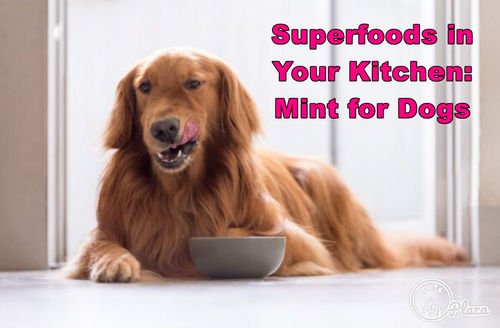- For so long as most of us can bear in mind, pet meals has lived in a bag. However earlier than they grew to become domesticated within the mid-1800s, dogs primarily lived exterior and ate uncooked meat or desk scraps.
- It was solely after the Industrial Revolution that the expansion of a extra prosperous center class led to cats and dogs changing into home pets who had been thought-about extra “civilized” companions than their out of doors, working counterparts.
- Let’s have a look again at how the industrial pet meals trade bought its begin.

1800s: The Early Years
- The world’s first industrial pet meals was developed in 1860 by an electrician named James Spratt.
- After journeying from Ohio to the UK to promote lightning rods, Spratt seen dogs alongside the riverbanks in Northern London consuming leftover hardtack, the dry biscuit sailors ate on lengthy journeys.
- Manufactured from flour, water, and infrequently salt, these cheap crackers had been utilized by sailors in want of lengthy lasting, imperishable meals throughout prolonged sea journeys.
- Spratt reasoned that dog house owners had been equally in want of a shelf-stable possibility for his or her pets, so he ditched the electrician gig and set out on a brand new profession path, creating the primary biscuit for dogs.
- Spratt’s Meat Fibrine dog Desserts contained a mixture of blended wheat, greens, beetroot, and “the dried unsalted gelatinous components of Prairie Beef” (curiously sufficient, Spratt remained notoriously tight lipped about his biscuits’ particular meat supply all through his lifetime).
- The biscuits had been costly, with one 50 pound bag costing the equal of a whole day’s work for a talented craftsman, and Spratt properly focused “English gents” who may afford the upper worth level.
- Regardless of the excessive value and lack of transparency about his meat supply, Spratt billed the biscuits as dogs’ major meals supply.
- After launching the corporate’s American operations within the 1870s, Spratt employed an aggressive promoting technique: he began concentrating on well being acutely aware pet house owners and dog present individuals and acquired the total entrance cowl of the primary American Kennel Membership journal in January 1889.
- In selling his product, he referred to as upon a number of outdated associates (learn: wealthy, English nation gents) for testimonials touting the advantages of Spratt’s dog muffins.
- The American public was hooked and rapidly traded the desk scraps they’d been feeding their dogs for Spratt’s biscuits.
- Spratt additionally notably pioneered the idea of “animal life phases” with applicable meals for every particular person stage. Sound acquainted?
1900s: A New Market
- By the early 1900s, extra individuals had been taking discover of the industrial pet meals market and comfort was the secret.
- Canned pet meals grew to become the most well-liked possibility on the cabinets after Ken-L Ration, the primary canned pet food in the USA, was produced in 1922.
- Manufactured from horse meat (which was rigorously marketed as “lean, pink meat” and solely disclosed in a lot smaller letters on the backside of the packaging), canned meals was stamped with a seal of presidency approval and had a 90% share of the market.
- By 1941, canned meals was so profitable that producers had been breeding horses only for pet food and slaughtering 50,000 of them per yr.
- However when tin and meat had been rationed throughout World Struggle II and pet meals was categorised as a “non-essential,” producers needed to get inventive.
- The mixture of those imposed rations and pushback from animal lovers who had been livid concerning the variety of horses being killed yearly for pet food created a golden alternative to introduce a brand new, disruptive product within the pet meals trade.
- A number of large title gamers joined the race to a brand new, extra shelf-stable product: Common Mills acquired Spratt’s US enterprise within the Fifties, and The Ralston Purina Firm started experimenting with the machines they had been utilizing for his or her Chex breakfast cereal to create a extra palatable pet food.
- Given the rations on steel cans, cardboard cereal containers appeared just like the excellent different for storing shelf-stable pet meals.
- In 1956, the primary dry kibble was produced by means of a course of referred to as extrusion. Extrusion is a technique used for manufacturing giant portions of shelf-stable meals (like, say, sugary breakfast cereals).
- It really works like this: moist and dry elements are combined collectively to type a dough-like consistency, which is then fed right into a machine referred to as an expander.
- The dough is cooked underneath excessive pressurized steam and excessive temperatures earlier than being extruded (or pushed) by means of a die minimize machine and forming the small shapes we acknowledge as kibble right this moment.
- The usage of extrusion for industrial kibble manufacturing gained momentum all through the Nineteen Sixties and Seventies as firms used the know-how to create new flavors and varieties.
- In 1964, The Pet Meals Institute (a gaggle of pet meals trade lobbyists) launched a sequence of advert campaigns to persuade customers that commercially ready pet food was the one choice to feed.
- The campaigns had been massively profitable in convincing the American public that their dogs’ diets needs to be kibble-based and had been paying homage to the early advertising methods employed by James Spratt so a few years earlier than.
- As soon as kibble had been established because the main pet meals possibility, promoting methods grew to become extra niche-based to distinguish manufacturers.
- By the Nineteen Eighties, Hill’s Pet Diet had launched prescription kibble for various illnesses (like kidney and liver failure) and continued to diversify by the Nineties, producing kibble primarily based on particular person exercise degree for weight administration.
2000s – right this moment: The Subsequent Frontier
- At this time, pet meals firms nonetheless produce kibble by extrusion as a result of it facilitates flexibility and density management and higher pasteurization.
- All elements (sure, even the prime quality or natural selection) are cooked on the identical extraordinarily excessive temperatures after which dried after extrusion with a purpose to take away moisture.
- Whereas this course of optimizes product shelf-life, it might probably additionally considerably impression the nutrient composition of the meals, and poses many different well being dangers.
- Moreover, a lot of the industrial pet meals panorama has turn out to be more and more unregulated and is marked by frequent remembers and well being controversies.
- Nonetheless, a fast stroll down pet meals aisles exhibits that the previous century’s advertising campaigns have been profitable.
- The American public largely regards industrial pet meals because the go-to alternative for feeding their dogs, and fashionable merchandise are shelf-stable and handy, the 2 tenets that guided mass manufacturing within the early 1900s.
- Whereas people have gone from consuming actual meat and greens as cavemen to ingesting a extremely processed food regimen of McDonald’s, maraschino cherries, and Twinkies within the ‘50s and ‘60s, we’ve made a return to actual meals prior to now decade.
- However as we start to coach ourselves about the important thing variations between extremely processed meals and the recent, actual stuff, one can’t assist however marvel at how a lot nearer we had been to feeding our dogs the best means once they had been merely consuming recent, human-grade meals again within the 1800s.



